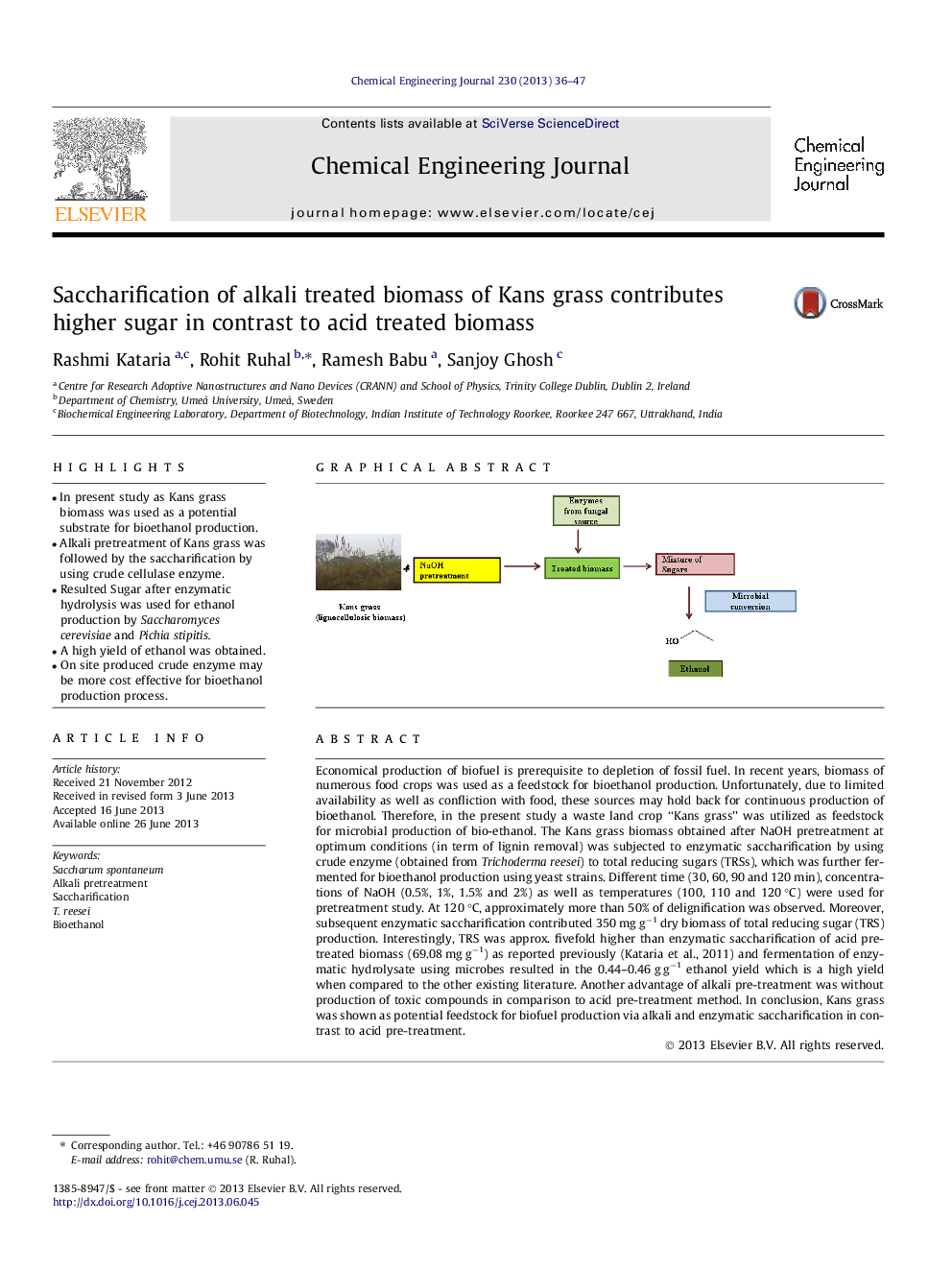| کد مقاله | کد نشریه | سال انتشار | مقاله انگلیسی | نسخه تمام متن |
|---|---|---|---|---|
| 148363 | 456411 | 2013 | 12 صفحه PDF | دانلود رایگان |

• In present study as Kans grass biomass was used as a potential substrate for bioethanol production.
• Alkali pretreatment of Kans grass was followed by the saccharification by using crude cellulase enzyme.
• Resulted Sugar after enzymatic hydrolysis was used for ethanol production by Saccharomyces cerevisiae and Pichia stipitis.
• A high yield of ethanol was obtained.
• On site produced crude enzyme may be more cost effective for bioethanol production process.
Economical production of biofuel is prerequisite to depletion of fossil fuel. In recent years, biomass of numerous food crops was used as a feedstock for bioethanol production. Unfortunately, due to limited availability as well as confliction with food, these sources may hold back for continuous production of bioethanol. Therefore, in the present study a waste land crop “Kans grass” was utilized as feedstock for microbial production of bio-ethanol. The Kans grass biomass obtained after NaOH pretreatment at optimum conditions (in term of lignin removal) was subjected to enzymatic saccharification by using crude enzyme (obtained from Trichoderma reesei) to total reducing sugars (TRSs), which was further fermented for bioethanol production using yeast strains. Different time (30, 60, 90 and 120 min), concentrations of NaOH (0.5%, 1%, 1.5% and 2%) as well as temperatures (100, 110 and 120 °C) were used for pretreatment study. At 120 °C, approximately more than 50% of delignification was observed. Moreover, subsequent enzymatic saccharification contributed 350 mg g−1 dry biomass of total reducing sugar (TRS) production. Interestingly, TRS was approx. fivefold higher than enzymatic saccharification of acid pretreated biomass (69.08 mg g−1) as reported previously (Kataria et al., 2011) and fermentation of enzymatic hydrolysate using microbes resulted in the 0.44–0.46 g g−1 ethanol yield which is a high yield when compared to the other existing literature. Another advantage of alkali pre-treatment was without production of toxic compounds in comparison to acid pre-treatment method. In conclusion, Kans grass was shown as potential feedstock for biofuel production via alkali and enzymatic saccharification in contrast to acid pre-treatment.
Figure optionsDownload as PowerPoint slide
Journal: Chemical Engineering Journal - Volume 230, 15 August 2013, Pages 36–47